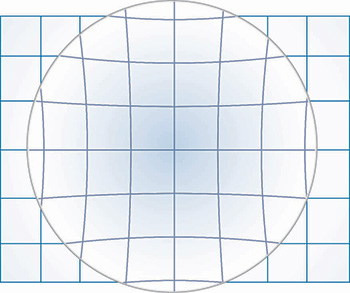Light Touch
Does This Look Like a Pincushion to You?
Stephen Wilk investigates how the pincushion distortion got its name.

I remember studying aberrations in my first undergraduate optics course. I learned that distortions are third-order aberrations independent of the pupil coordinates through which light rays pass and depend only on image height. If the coefficient for the distortion is negative, a rectangular grid imaged by a lens with this type of aberration appears magnified in the center and bowed-out at the sides—a barrel distortion. If the coefficient for the distortion is positive, the grid appears magnified at the edges with sharp, pointed corners—a pincushion distortion.
…Log in or become a member to view the full text of this article.
This article may be available for purchase via the search at Optica Publishing Group.
Optica Members get the full text of Optics & Photonics News, plus a variety of other member benefits.
